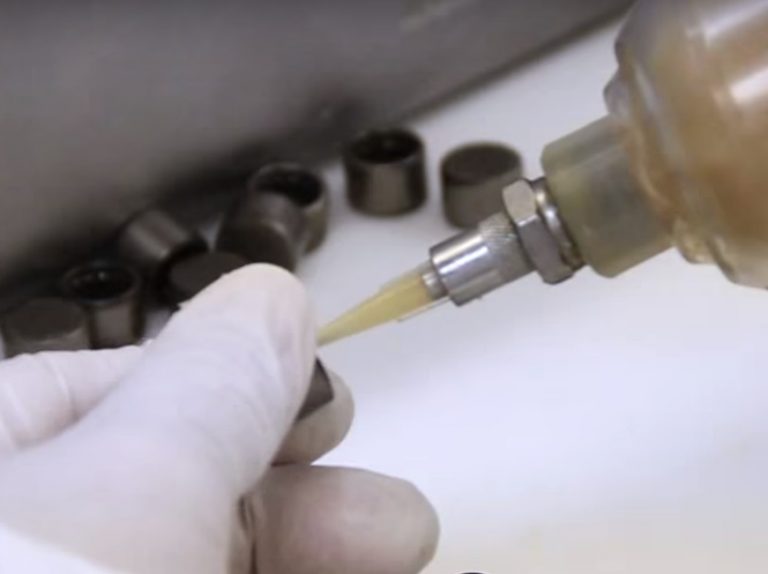Bearing Lubrication plays a vital role in the performance and life of rolling element bearings.

The most important task of the lubricant is to separate parts moving relative to one another (balls or rollers and raceways) in order to minimize friction and prevent wear. A lubricant that is designed for specific operating conditions will provide a load bearing wear protective film. The ideal condition is when the friction surfaces are separated by this film.
In addition to providing this load bearing film, the lubricant should also allow for the dissipation of frictional heat thus preventing overheating of the bearing and deterioration of the lubricant and provide protection from corrosion, moisture, and the ingress of contaminants.
Oil
Both petroleum based and synthetic oils are available. Examples of synthetic oils are silicone, diesters, PAO’s, and fluorinated compounds. Bearings lubricated with oil will exhibit less start up and running torque and have higher speed capability. Oils are subject to evaporative losses so their service life in a bearing is less than grease.
Miniature and instrument bearings are often only lubricated once for the life of the bearing, making the choice of lubricant critical. Larger bearings are subject to re- lubrication as part of the machinery maintenance cycle. These bearings are often lubricated via oil recirculation systems that are designed into the machinery or equipment.
Temperature range, viscosity, evaporative rate are key characteristics to consider when selecting an oil.
Grease
Grease consists of a base oil with a thickener added. These thickeners consist primarily of metal soaps (lithium, sodium, aluminum, and calcium), organic (ureas), or inorganic compounds.
While these thickeners greatly influence the characteristics of the grease, the lubricating properties of the grease are attributable to its base oil. In addition, grease can contain additives that improve its performance. Additive types include antioxidant, anticorrosion, anti-wear, fillers, fortifiers, and extreme pressure fortifiers.
Temperature range, base oil viscosity, and stiffness or penetration level are key characteristics to consider when selecting a grease. Most greases used in rolling element bearings are NLGI grade 2
Solid Films
Solid films are non-fluid coatings applied to the frictions surfaces to prevent wear. They are used in extreme situations where an oil or grease cannot survive and are typically selected as a last resort or option (such as harsh environments such as extreme temperatures, vacuum, or radiation)
These coatings include graphite, MoS2, silver, gold, or PTFE. Hard coatings include TiC or chrome. Solid films are engineered on a specific application by application basis.
AST’s consultants and engineers are ready to provide further information about lubrication and any other bearing questions you may have – contact them here.

